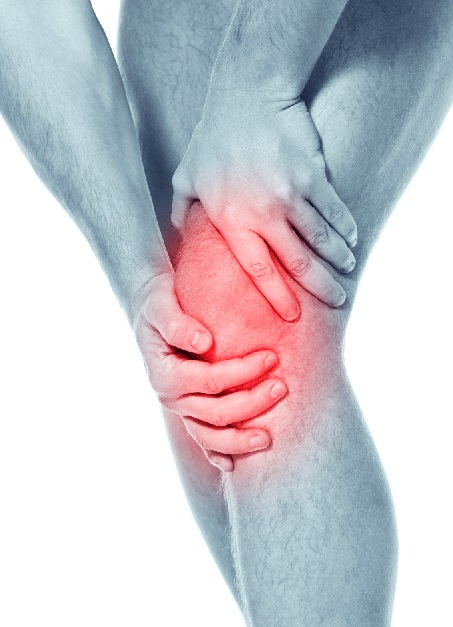Due to the nature of the sport, soccer players tend to have a high risk of knee injuries, but by including certain exercises you can help prevent these injuries, or speed up recovery post-injury. I had to learn this the hard way…
Back in 2004 I was taking Judo lessons in my quest to become a legitimate bad-ass. During one grappling session with another big bull-headed guy, I ended up awkwardly twisting during a throw and suddenly “POP”, there goes my ACL.
I opted to have ACL reconstruction surgery, after which I was surprised and disappointed to discover that my knee wasn’t recovering as quickly as I’d expected. I tried everything: physio, massage, chiropractic, acupuncture, laser, etc. I’d get temporary relief at best, but my strength and stability wasn’t there when I hit the gym. I just couldn’t get my medial quad to contract properly. Even after several months nothing seemed to work… until I ran into some professionals who guided me toward a different approach.
I started working with a team of biomechanics specialists who practiced Muscle Activation Techniques. I learned about how muscles and the nervous system respond to passive and active resistance (basically stretching vs. isometric contraction), and how to progressively strengthen weak links and restore muscular balance. Thankfully, today my injured knee has become my strongest one.
A couple of years ago I was fortunate enough to help a client in a similar situation recover from his ACL surgery, after over a year of trying the “mainstream” approach. After working with me he went on to compete in powerlifting and strongman competitions. It wasn’t until just recently that he asked me to put together a video demonstrating the corrective exercise progressions I used to help him rehab his knee injury a few years ago. So for those who might benefit from it, here it is:
Here are a few basic suggestions I outlined in the video, for those suffering from knee pain (keep in mind it may take a few weeks to progress through each stage):
Stage 1- Medical Assessment and treatment as indicated after an acute injury. Typically ice and rest will help reduce inflammation and support recovery, although some suggest minimizing the use of ice and anti-inflammatories early on because inflammation is also part of the natural healing process. But IMO the application of ice for up to 20 minutes at a time is helpful for pain control as well as bringing down swelling. Excessive swelling itself can inhibit muscular contraction and cause weakness.
Stage 2– Active Range of Motion. Gradually progress AROM while avoiding passive stretching. The key here is only move into positions you can control with your own muscular effort… NOT outside force.
Stage 3– Isometric Exercise to activate the inhibited muscles involved. Use 5 to 10 second static contractions, moving into the position of weakness / restriction. Progressively increase the strength of contraction, starting very gently, and avoid forcing any range of motion.
Stage 4– Isolation Exercises to strengthen the muscles we’ve now activated, and to restore muscular balance between the affected side and the “good” side. Start with unilateral movements to target each limb independently.
Stage 5- Compound Exercises to incorporate the muscles we’ve trained in isolation back into the kinetic chain of movement! Start with unilateral exercises like step ups and single leg deadlifts, and progress to bilateral movements like squats and deadlifts.
Other IMPORTANT Tips:
- Slow down the eccentric phase of each rep and hold the fully contracted position of each rep (Where applicable).
- Once you’ve reached Stage 5, continue to warm up using Active Range of Motion exercises such as this DYNAMIC WARM UP, as well as Isometric Exercises such this CORE ACTIVATION routine before every lower body workout.
- Work on fixing your feet and wearing appropriate footwear as well. Your feet play a big role in the health of your knees. Read this article on how to FIX YOUR FEET.
- Pay attention to your nutrition and sleep! Your body will respond better to any training plan and heal more quickly if you feed it healthy nutrients and let it rest. You can also reduce inflammation by consuming healthy fats (ie: fish oil) and staying well hydrated.
- Fix your ASS! Most clients I’ve worked with came to me with shamefully weak glutes (butt muscles). Years of sitting at a desk, in front of a computer or TV, or driving hours every day, will turn your tush into mush. Unfortunately, when you are weak at one joint / muscle group, other muscles must compensate and take up the slack. When you lack glute strength and hip extension is poor, the load is carried over to the knees and lower back. WEAK GLUTES is a very common and very serious issue that can lead to many other musculo-skeletal problems! This is why it is so important to include hip extension exercises like the Hip Bridge, Hip Thrusters, Squats, and Lunges (as outlined in the exercise video).
I hope you found this helpful and I wish you all the best in your quest for strong, stable, pain-free knees! If you have any questions, comments, or knee-injury stories of your own to share, please post them down below.
Stay fit, train smart, play hard.
Josh
